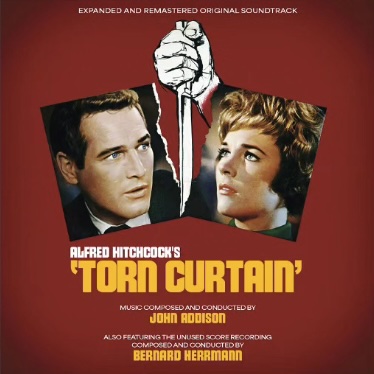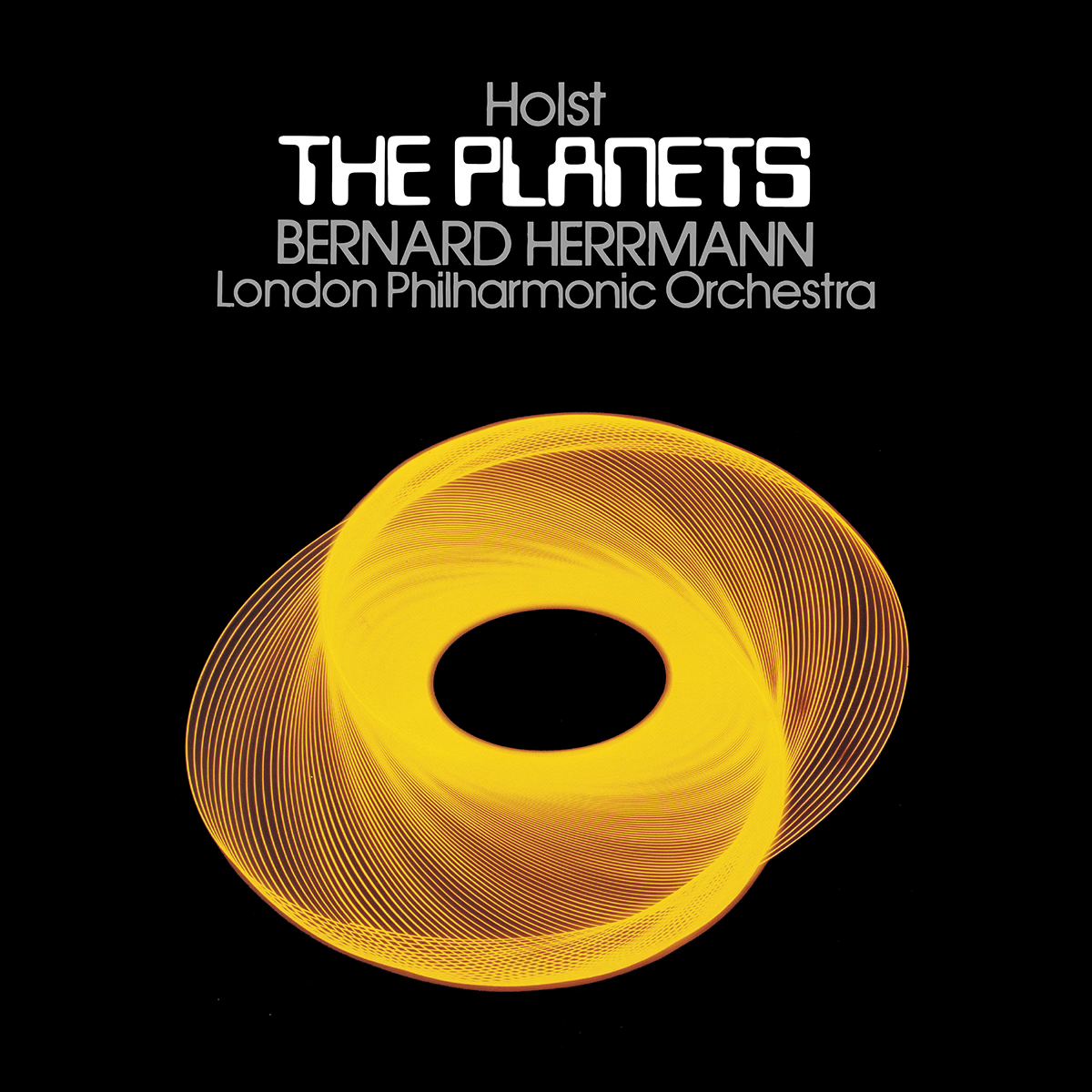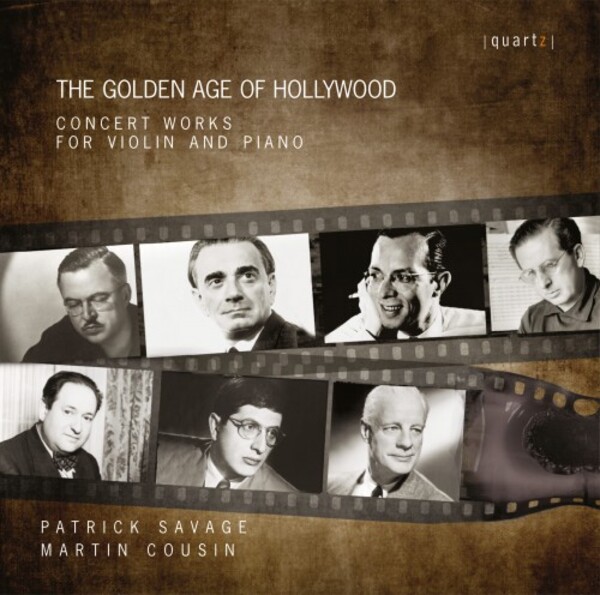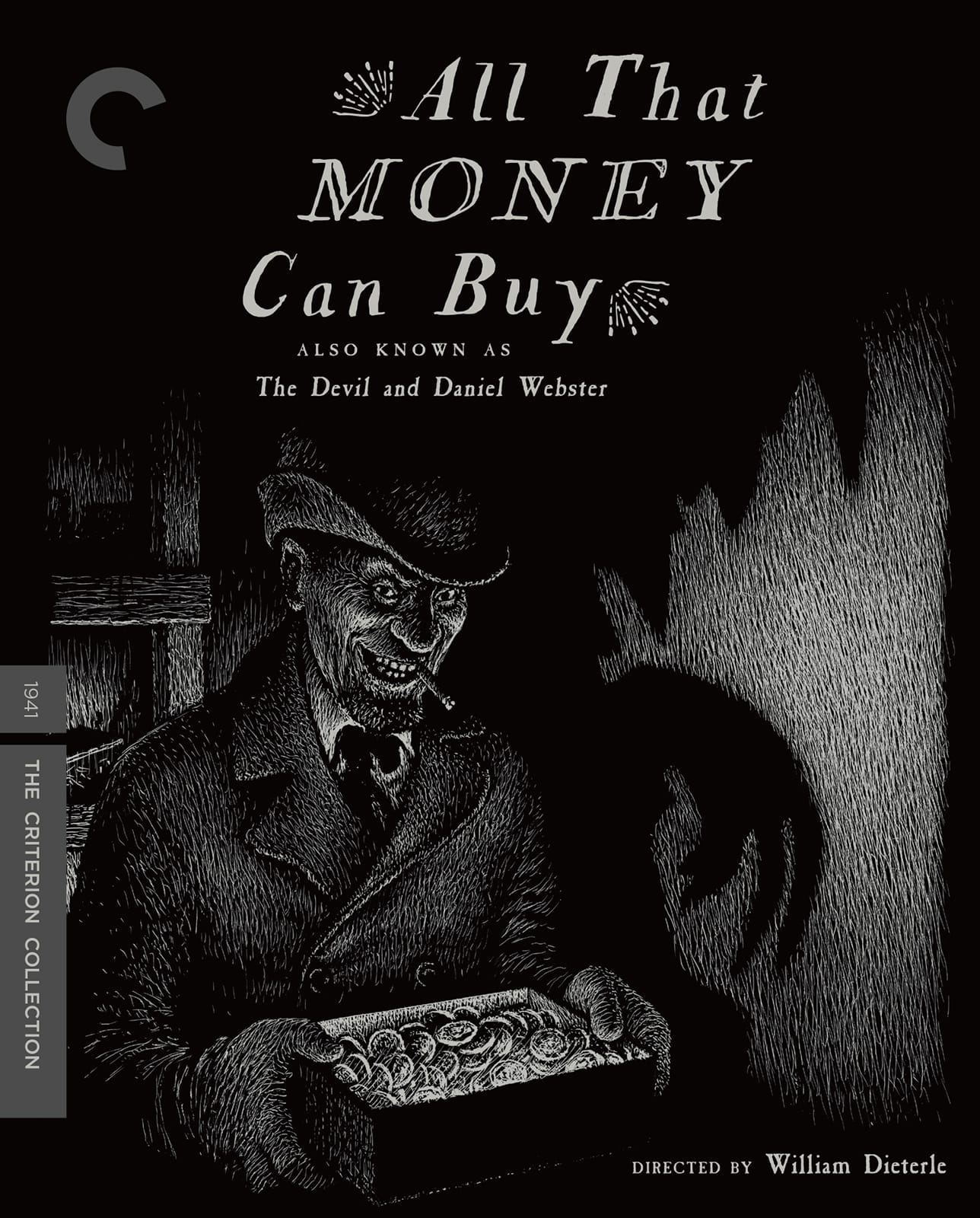David M. Green: So, where does Herrmann come in?
Tony D’Amato: Stokowski. He introduced Herrmann to me. Stokowski said, ‘This man should work, he is good, he should work.’ And then he dismissed Bernard. He said, ‘We’ve talked enough, we can’t talk anymore.’ He was, you know, eccentric. Bernard adored the old man; he was always at his sessions.
DMG: All the time?
D’Amato: Yes, well, he was with Stokowski when he went through his bad period, his divorce from Gloria Vanderbilt. Herrmann was very, very sympathetic to Stokowski, attending him because he loved the old man.
DMG: Tell me a little about your impressions of the old man.
D’Amato: Well, he wasn’t always terribly nice. He was impatient, but I admit he played at being the curmudgeon more often than he really was, so I imagine he must have appeared far more unruly and rude to others. But at the point I came into his life he was very frustrated. He never wanted to be reminded about how wonderful his last recording was, his answer was always the same, ‘What’s next’. He was always aching to do more. I couldn’t fit it in, not at Phase Four, maybe for London, but I already told you that we had, even when he left us, a large amount of stuff still to be released. But, in any event, we did some adventurous material with him. We produced the Orchestral Set Number 2 by Charles Ives with L’Ascension by Messiaen (SPC 21060). We broke some ground with Stokowski. He wanted to something called The Universal Prayer by a composer named Panufnek, which I simply couldn’t put out on my label. So, I gave him permission to break his contract with me for that period.
DMG: Do you remember doing the Bach Transcriptions (SPC 21096)?
D’Amato: Well, the transcriptions… Look, he was an organist. He loved that instrument. He also learned to orchestrate big sounds. I know it sounds corny, but, I worked with many conductors, and there was a way Stokowski would sit and conduct and sometimes put down a beat very badly. But if he wanted to emphasize something, this hunched-over figure would suddenly stand erect, put out his arms, and he’d have that white hair going, and waving those effeminate fingers like stiletto’s out there. I tell you, one would sit in the orchestra sometimes during rehearsals, and not help but be impressed.
DMG: His presence would command the attention of everyone in the orchestra.
D’Amato: Absolutely. If his ears failed him, orchestras who devastate lesser conductors would just ride along. He would never know; they’d fix it. I remember we were doing Siegfried’s Rhine Journey by Wagner (SPC 21016), and he kept telling Barry Tuckwell, on the horn part, that he was too close, and he kept telling him this until he was out on the balcony. This isn’t some schmuck, this is Barry Tuckwell. So, up in the balcony, he’s got a mirror so he can see Stokowski conduct. But it was that crazy sometimes. It was heartstopping sometimes, and it was wonderful. You’d go to the lunchroom the next day, and everyone would gather around wanting to hear the stories from the day before.
DMG: So, Herrmann wasn’t doing anything when he came to you.
D’Amato: He was on his way down. I don’t quite remember the date, but the first thing he recorded for us was Music From The Great Movie Thriller’s (SP 44126). I remember that for some reason when Benny died, I was left the original scores to the films, and other things. I didn’t quite feel comfortable with them so I made copies and sent them to his brother, who I think might still be alive. But Norma, his wife, had given me all the work, and I’m not really quite sure why. I believe they’re all safe in the Herrmann archives now. I always considered him a great, absolutely great movie writer. I really liked Benny, but what a difficult man.
DMG: I certainly love his work.
D’Amato: During the time I knew him, he was quite depressed about what was going on in the movies. He was an artist, and he had to watch far lesser composers get work that should have gone to him. He was very affected by the entire Hitchcock thing.
DMG: It’s certainly a tragedy that right towards the end, the young generation of filmmakers from the late sixties film school class were starting to discover him. I’ve often reflected that he lived much the same life as the man who brought him to Hollywood, Orson Welles. As successful as they both were in their youth, they both had a period where they had to sit by as lesser artists got the work that they were far more qualified for.
D’Amato: They both died at about the same age. What saved him, I believe, in that decade before he died, was being able to record. As self serving as that may sound, I do believe it. Making records for us brought him something. You know, Psycho, as a score, was never meant for just strings. He wanted a big orchestra, and Hitchcock wouldn’t give it to him. Hitch told him, ‘It’s a cheap black and white film and I don’t want to spend any money on it. If you want to do something, do it for string quartet.’
DMG: But of course it does work that way.
D’Amato: For the film… but when he recorded it for us he used a much larger string orchestra, and I believe he was quite happy with the result. It’s quite good, but not terribly new. If you listen to Shostakovich’s Chamber Symphony, then listen to Psycho, moods of it are already there in Shostakovich’s work.
DMG: I know some might find it gimmicky, but on the Psycho suite he did for you.
D’Amato: The session was wonderful. Just took our breath away.
DMG: Takes mine away.
D’Amato: You remember the opening scene of Taxi Driver? Not the whole thing, which I didn’t like, but that opening scene in the cab is the most evocative, striking work of Herrmann’s career. His great regret was the choice he made, and I suppose he would have made it the same way again, but by opting for Hollywood he simply stopped writing anything else. The material he did write, the cantana for Moby Dick and the Wuthering Heights oratorio is quite good, and received fine write-ups.
DMG: The first symphony of his as well.
D’Amato: Yes. He had terribly high blood pressure. I remember his wife, Norma, telling me, ‘he’s just always so angry.’ The airlines used to have him on their lists as a difficult passenger. I crossed from New York to London with him, and we were having a glass of champagne. So we held out our glasses, the stewardess came, he saw the bottle, looked at the label, and said ‘huh, California.’ He then absolutely blew his top. He was screaming about paying full price for the ticket and getting cheap alcohol, and ‘what is this airline, anyway.’ He told them to take it back, or, rather yelled at them to take it back.
DMG: He’d rather go dry than cheap.
D’Amato: Yes. But you know, he was wonderful to be with, even as difficult as he was. He certainly looked like a crazy old guy. I haven’t though about these things in a long while. But, Contrary to popular opinion, Herrmann was not a great conductor. He was a terrible conductor, in fact. I read all over the place reviews of his work where they talk about the quality of his conducting, and I don’t want to speak ill of someone not around to defend themselves other than to just set the record straight. He tried so very hard, but he wasn’t very popular with the musicians. On the other hand, he was so talented, but all elbows, he conducted with his elbows.
DMG: But the musicians respected his work so much, it kept them going.
D’Amato: Sure. They respected him; and even when he wasn’t recording his own work, they knew, the players knew, that he would bring along a certain style of contact. That wouldn’t come from me, or from the engineers, it came from Benny. An example is The Impressionists (SPC 21062).
DMG: A fine recording.
D’Amato: Oh, wonderful. Absolutely terrific. Who would pick the Five O’Clock Fox Trot? He was wonderful. Then he comes up with a concept for The Four Faces Of Jazz, I mean, whether you like it or not, you have to ask, who would do it? Who would put those elements together? I loved everything he did.
DMG: Mobile Fidelity has done Four Faces Of Jazz as well as The Mysterious Film World Of Bernard Herrmann, and Fantasy Film World Of Bernard Herrmann. London/Decca has their own Phase Four series as well. I guess they’ve put out about twenty or thirty under the Phase Four moniker.
D’Amato: Really? I wasn’t aware. I’m so glad they’re doing this now.
DMG: You didn’t know?
D’Amato: No, I didn’t.
DMG: Somehow I find that a bit shocking. Their (Mobile Fidelity’s) CD’s of them are quite good, but I can’t say I’m as happy with the standard Decca/London issues. It seems as if they’re using some sort of noise reduction that’s removing much of the ambiance of what I hear on the original LP’s. Another tragedy is that they aren’t using the original cover art, nor the correct running order, and in some cases, not the original names of the LP’s.
D’Amato: I haven’t seen them. Though I did see a re-issue of The Four Faces Of Jazz and thought it was a pity that they threw a Stanley Black selection on the disc. You see, as a concept recording, it should have either been left alone, or at least given another Herrmann track with the same style of interpretation.
DMG: Well, this is where the commerce becomes more important than the art. They don’t consult you for any of this anymore?
D’Amato: No, why would they?
DMG: Because it would add more validity to what they’re doing. I mean, they could have asked you ‘Hey, Tony, you were there, what should we put on this Four Faces Of Jazz recording…’
D’Amato: Ravel’s The Five O’Clock Foxtrot from The Impressionists.
DMG: See? So, don’t say they don’t need to ask you. As a rule, I don’t think they should be throwing anything extra onto these re-issued LP’s as it gives them an excuse, I think, to not bother releasing this recording or that recording. Especially with the Phase Four re-issues running only ten dollars to begin with.
D’Amato: Meaning?
DMG: Meaning I don’t think folks would complain if the discs didn’t utilize all of the discs’ running time.
D’Amato: You mentioned covers, and you know what was a great cover? The Impressionists. The subjects for that were an Irish plumber and his girlfriend. We dressed them up, took the photos, and, I mean, they looked like impressionists who got Saturdays off so they could go to the park. And then the paper stock looked like canvas. That was a wonderful cover.
DMG: So what was the strain between Stokowski and Herrmann?
D’Amato: Well, Stokowski’s way was that he would either slap you away, or you would become his gofer. Such men serve themselves. It’s a terrible thing. People keep wanting them to be nice guys, but they’re not; they’re usually freaks. And I know this hurt Herrmann quite a bit, and they never really were friends.
DMG: I’ll bet Herrmann brought a lot of things to you that he wanted to record.
D’Amato: Oh, yes. I’m only sorry I had to turn some of them away. He definitely wanted to record more Ives. He loved Ives. He did Symphony No. 2 by him for me (SPC 21086). We did more with him, but he always wanted some more Ives. But he was no conductor, and it was difficult to figure out what we could let him do and couldn’t… People don’t realize he was dyslexic. That’s why there are so many crazy spellings of his name, two R’s two M’s. Norma Shepard, his wife told me this. He had always signed his name differently, so there were different spellings all over. She’s someone you should talk to for more on Herrmann. She’s in Brighton, I think.
DMG: Why is it albums recorded in the old days really do come across better now?
D’Amato: I did an album called France (SP 44090) with Stanley Black. He was probably the greatest symphonic arranger I ever worked with. We were doing Plaisir D’Amour, and I said, ‘look, Stanley, I don’t want the Eddie Lester singers with twenty guys. What are we going to do, over-dub them ten times to get a big sound? We’re just going to get twenty times twenty people. We’re not going to get depth, we’re not going to get weight, we’re not going to get body. How can we do it? We can’t go over-budget…’ What was beautiful about recording in those days was that there was always a solution to whatever problem you’d encounter. I went to the Mormon Tabernacle Choir Of London…
DMG: The London chapter…
D’Amato: That’s right, and we got three hundred and fifty people to sit in the balcony at Kingsway Hall. They all brought brown-bag lunches. We gave three hundred and fifty pounds to their organization, and these people hummed right on cue. You could feel the vibration from them alone right under your seat. There was just always an inventive solution that hadn’t been done before, and the immediacy of the situation was natural.
DMG: And this comes across to the listener when playing back the older recordings now.
D’Amato: Quite possibly. Now, with Stokowski recordings, he just loved sound. Big sound. He was always willing to do anything for a recording at all phases. For example, on the 1812 Overture (SPC 21041), he said ‘I want bells, much bells. Can you get back to me about it by Friday.’ So someone said if we go to Saint Petersburg there are all kinds of bells everywhere. I said we don’t have to go that far, maybe we can go to Zurich. Once a month, on a Sunday, for fifteen minutes all the bells in the city ring. So we sent a team out with recorders and picked up the whole thing. We played it for Stokowski and he loved it, he said. ‘These are wonderful bells, oh how wonderful these bells are.’ They went right onto the recording. Now it was taking a bit of license, but he was known for that.
DMG: Not always really to purists’ liking, either.
D’Amato: One of the few times that Stokowski really talked about these things, because he wanted to talk about other things, was on a trip from the Southampton. You know, I spent a lot of time with him. He really needed a companion. He would never fly. He would come into Southampton by ship, and he’d have to be picked up by car. I’d go to meet him, and we’d take two days on the road. He would always want to stop at different places, always at Winchester cathedral. He told me on this particular trip that had Beethoven been alive, he would have altered the recapitulation of the Fifth on the bassoon figure that restates the theme. The bassoon comes back, and why does it come back? Because there wasn’t enough time back then to get one crook out of the French horn and put the next one in. When the valve horn was invented, that was not a problem anymore. So Stokowski took out the bassoon and put in the horn. People said that he was playing with the parts, but it was a certain kind of scholar’s liberty that he took.
DMG: One of the things that had to be exciting about working with him was going into the studio, knowing you were going to hear something different.
D’Amato: Well, with Scheherazade (SPC 21005), there’s a tape somewhere of the rehearsal. It was absolutely magnificent. He says on it ‘What’s the matter with you? I give clear beat, why can’t you just watch me?’ If you could see his scores, they were all marked with crayons, just so he would know what it was he really wanted to remember. I’ve looked at his old scores, and I remember seeing the score to the Enigma Variations by Elgar, and on the front page there were two letters taped to it. One was from Stokowski to Elgar, the other was Elgar’s reply. Stokowski was the conductor of the Philadelphia Orchestra at the time and was premiering the work. He wrote to Elgar humbling himself with enormous gratitude to him for being able to conduct this beautiful piece of music. He talked about how much he owes Elgar, and how much the world of music owes Elgar. It was a beautiful reply as well. I begged him to let me copy those letters.
DMG: They survived, didn’t they?
D’Amato: Oh, yes, I’m sure they’re in some archive, but I brought it up to show that beneath the surface he was, I imagine, quite sentimental. He just didn’t show it often.
DMG: Back to the big picture, I guess… After the final takes in the studio, did everyone sit in on playback?
D’Amato: Oh yes, everyone would sit in, take notes, and we’d run through until no one had any notes left. Then we’d know we had it. Then it was off to the cutters. We cut everything at half speed back then.
DMG: Really?
D’Amato: Oh yes. It wasn’t advertised, but they were half speed and they were usually cut very well with Neumann cutters. We had good equipment and great staff. Typically under-paid, over-educated Englishmen.
DMG: What comes to mind musically when I say ‘Best-Of’ Phase Four?
D’Amato: Probably the best sound recording in the classical division was Leinsdorf’s Der Rosenkavalier by Strauss (SPC 21037). You want to talk about sonics? I personally believe its the best sounding record Leinsdorf ever made. You know there are two ways to balance. The engineer can go in there and make it or break it, but if you’ve got a conductor who knows where everything needs to be its perfection.. Leinsdorf knew. Stokowski, Munch, Dorati, and especially Leinsdorf were always balancing. The left hand was always at work, hold down the trumpets, hold down the timps. And of course, the engineer wouldn’t have a problem. I mean, with some conductors I’d have to tell Arthur (Lilley), ‘we need more viola’, and he’d say ‘where?’, and I’d let him know, and we’d take care of it next time around. But the conductors who were able to do that for themselves extracted the best sounds. It could certainly be magic sometimes. And we had great equipment back then. They say things get better with time, but I remember the equipment sounding so much more alive then.
DMG: Tony, I thank you so much for this opportunity to talk.
D’Amato: Oh, David, it was my pleasure. This was quite a nice time, and I’m glad to see that there’s such an interest in what we did back then.












![The Man Who Knew Too Much – 4K restoration / Blu-ray [A]](../../wp-content/uploads/2023/11/TMWKTM-4K.jpg)
![The Bride Wore Black / Blu-ray [B]](../../wp-content/uploads/2023/07/BrideWoreBlack.jpg)
![Alfred Hitchcock Classics Collection / Blu-ray [A,B]](../../wp-content/uploads/2020/07/AHClassics1.jpg)
![Endless Night (US Blu-ray) / Blu-ray [A]](../../wp-content/uploads/2020/03/EndlessNightUS.jpg)
![Endless Night (UK Blu-ray) / Blu-ray [B]](../../wp-content/uploads/2019/12/ENightBluRay.jpg)